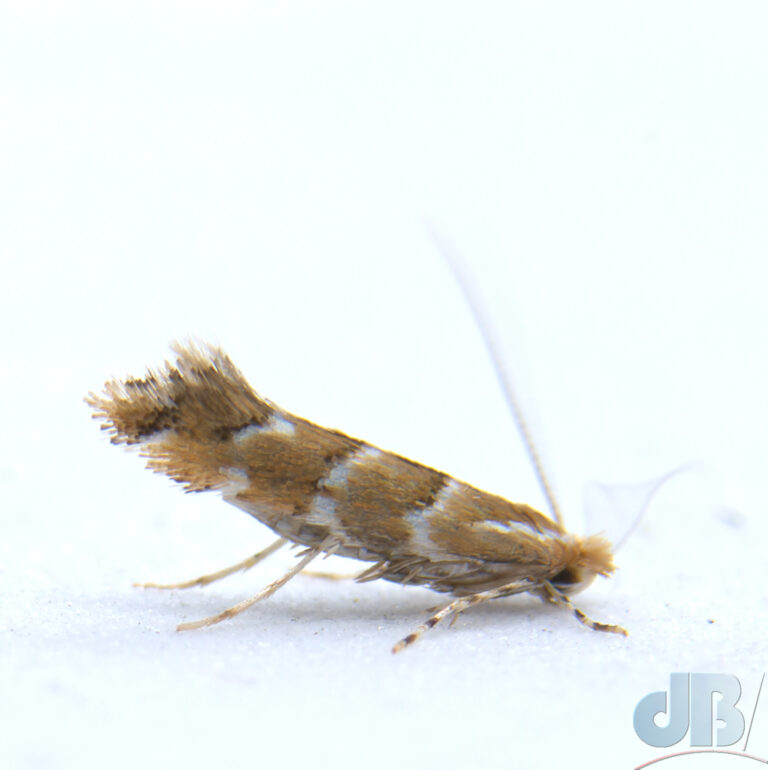I was tidying up the mothing equipment, which is basically a box and egg cartons when I noticed a Least Carpet roosting on a window frame in the conservatory, I stepped up with a pot to catch it so I could release it into the back garden but spotted another tiny moth next to it. At this point, I wasn’t even sure it was a moth. It looked orange with what seemed to be white stripes. I grabbed a quick phone macro shot, before potting it.
It wasn’t a species I’d noticed or recorded before, but the ObsIdentify app ticked it as the Horse-chestnut Leafminer, Cameraria ohridella. This was confirmed by a quick look at the species page on UK Moths. LabLit on twitter has now told me that the moth’s species name “ohridella” is named for Lake Ohrid in Macedonia.
I set up my macro “studio” and got some closeups of the moth against a matte white background, once it would sit still for more than a second or two. The moth is a mere 4 millimetres, I’d say, thank goodness for macro lenses and extension tubes.
![Horse Chestnut Leaf-miner, Cameraria ohridella [Deschka & Dimic, 1986]. Shiny scales reflecting macro "studio" LED lighting](https://www.sciencebase.com/images/Horse-Chestnut-Leafminer-2023.jpg)

The moth species was first recorded in Macedonia in 1985 and took just 15 or 16 years to reach the UK. It was recorded in Wimbledon in 2002 but was abundant so may have arrived just after the eponymous tennis tournament the year before. First seen in my village of Cottenham in 2004 and recorded by a fellow mothing friend at the other end of the village in 2022. I may well have seen it last year without realising, of course.
UPDATE: 27 July 2023, we camped under a Horse Chestnut at Cherry Hinton Hall for the Cambridge Folk Festival. The tree was covered in larvae and lots of adults flying about.